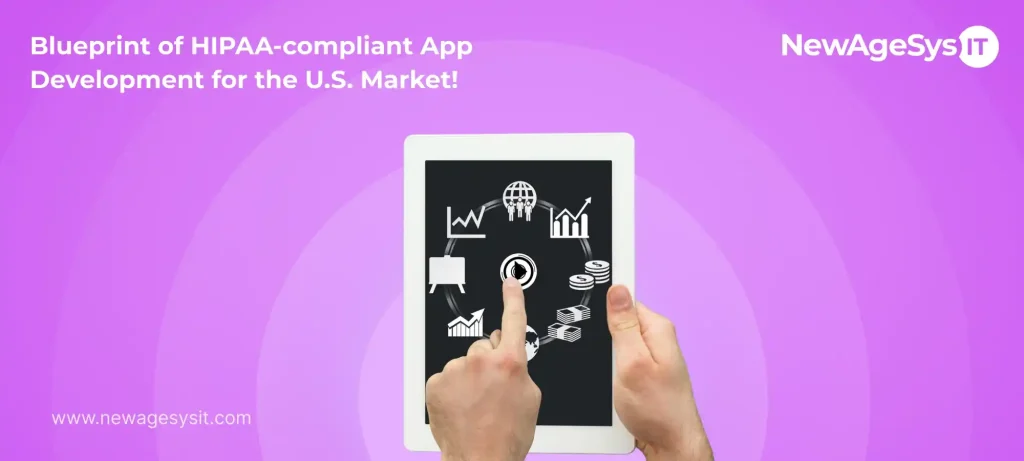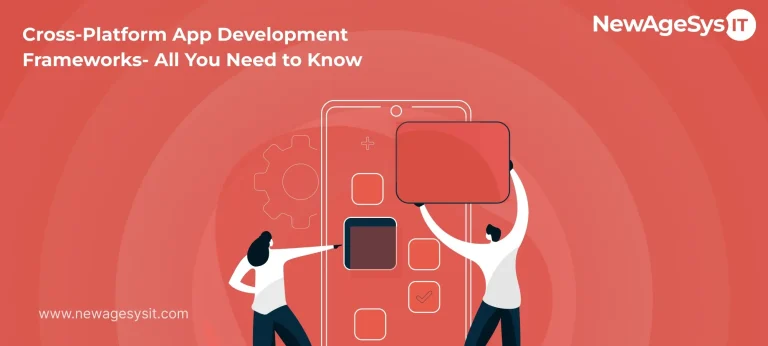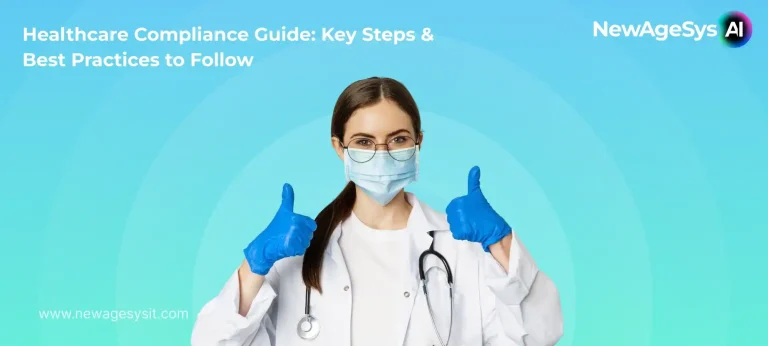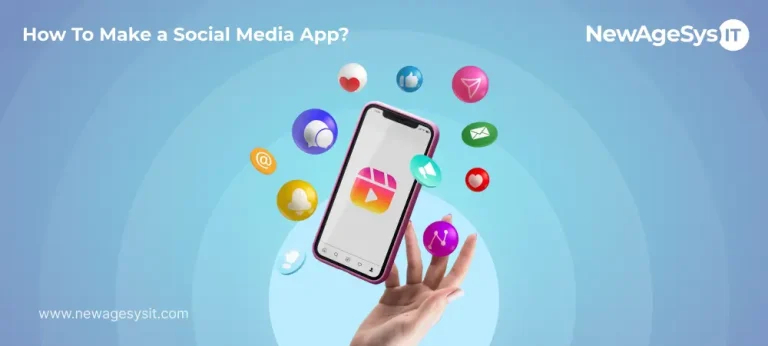| Key Takeaways: HIPAA is an essential compliance for any healthcare app that collects, stores, or shares PHI (Protected Health Information) in the U.S. market Both covered entities and business associates are bound by HIPAA to protect PHI Failing compliance can lead to severe civil and criminal penalties that go up to $2.1M+ over 10+ years of imprisonment To develop a HIPAA-compliant app, one must secure infrastructure, use encryption, enable access control, audit logs, and conduct regular testing. HIPAA boosts trust and enables partnership + it opens door for similar certifications like SOC 2, HITRUST, and GDPR. |
Startups, enterprises, or simply entrepreneurs working in the healthcare domain are privy to the term ‘HIPAA.’ But what does it stand for? The Health Insurance Portability and Accountability Act is a 1996 federal law enacted by the U.S. Congress.
Its purpose: To protect sensitive patient health information from being disclosed without explicit patient’s consent or knowledge. In our context, anyone or everyone working to develop a healthcare application that deals with sensitive patient data needs to follow HIPAA-compliant app development.
Being a service provider in the app development domain, we ourselves have dabbled with HIPAA and understand the importance of HIPAA Integration, both in terms of security and penalties. And, therefore, we explicitly made efforts to create this article to help you cut through this cornerstone regulation, ensuring that your healthcare app is secure, private, and compliant as per HIPAA.
So, let’s begin!
HIPAA – Introduction
We’ve already shared a snippet of what it means to be HIPAA-compliant in the introduction. However, is it the entire picture? Absolutely not. The term HIPAA carries volumes of context and knowledge, which we have tried to simplify below, for easier understanding:
Definition: HIPAA is a law enacted for any healthcare app that collects, stores, or shares personal health data. It demands that the information stay confidential and only be accessible to authorized personnel.
Brief History of HIPAA:
- 1996: With healthcare moving to digital systems, HIPAA was passed to improve efficiency for healthcare delivery and patient data protection.
- 2003: The Privacy Rule comes into effect. It sets standards for health information protection.
- 2005: The Security Rule was implemented for protecting electronic health information (ePHI).
- 2009: The HITECH Act comes into play, strengthening HIPAA enforcement and delivering expanded requirements against data breaches.
- 2013: Omnibus Rule, the last critical amendment so far, is introduced. It furthers clarity in privacy/security requirements and expands obligations to secure PHIs to business associates.
Who is Legally Bounded by HIPAA?
Under U.S. law, HIPAA legally binds specific entities divided into two main categories: Covered Entities and Business Associates.
Covered Entities
Covered entities are organizations or individuals who directly create, receive, maintain, or transmit PHI as part of their operations. These entities include:
- Health Plans (Insurance companies, Medicare, Employer-sponsored Health Plans, etc.)
- Healthcare Providers (Doctors, Hospitals, Clinics, Pharmacies, Labs, etc., only in cases where electronic transmission is done through them for certain transactions)
- Healthcare Clearinghouses (Intermediaries that process health data for providers and insurers)
Business Associates
Non-healthcare organizations or individuals come under the business associates category. These organizations handle PHI on behalf of a Covered Entity. So, for instance, if a client demands NewAgeSys a mobile application that handles PHI, we’d be a business associate.
Business associates are legally bound if they:
- Create, receive, transmit, or store PHI for a covered entity
- Perform any service, such as data hosting, billing, IT support, or legal service, that involves PHI
Different entities covered in the business associates categories are:
- IT Vendors (Cloud Storage Services, SaaS Platforms, App Developers, etc.)
- Billing Companies (Medical Billing Firms)
- Law Firms (If medical records are handled in a legal matter)
- EHR Providers (Electronic health record system developers)
- Consultants (Individuals who work with healthcare data or analytics)
It is important to note that business associates are required to sign a Business Associate Agreement (BAA) with the covered entity.
Data Points Protected by HIPAA – An Extension of Protected Information in PHI
We’ve been talking again and again about protecting PHI through HIPAA-compliant mobile app development. However, what are we protecting? Well, there are 18 identifiers of protected data in PHI as per HHS.gov that conceal a patient’s identity. Here’s a list:
- 🧑💼Name (full name or any part of it)
- 🗺️Geographic Identifiers (Address smaller than a state; e.g., street, ZIP code, etc.)
- 📅Dates (Birth date, death date, exact age if over 89, etc.)
- 📞Phone Numbers (Personal or work)
- 📠Fax Numbers (Any associated fax)
- 📧Email Addresses (Personal or Business)
- 🔐Social Security Numbers (SSN; Full or partial)
- 🏥📄Medical Record Numbers (Any unique identifier assigned)
- 💳🏥Health Plan Beneficiary Numbers (Insurance member IDs)
- 💳Account Numbers (Bank, Billing, or Healthcare payment account details)
- 🪪Certificate/License Numbers (Driver’s License, Medical License, etc.)
- 🚗🔢Vehicle Identifiers (License Plate, VINs, etc.)
- ⚙️🔢Device Identifiers/Serial Numbers (For implantables, pacemakers, etc.)
- 🌐Web URLs (Linked to the patient or their health services)
- 🖥️🌐IP Addresses (Which can be used to identify an individual)
- 🧬🖐️Biometric Identifiers (Fingerprints, Retinal Scans, etc.)
- 🖼️🙂Full-face Photos or Images (Any comparable image)
- 🧾🆔Any Unique Identifying Number, Code, or Characteristic (That identifies a person indirectly)
If each of these 18 identifiers is removed, there’s no basis to identify the concealed identity of a person, and hence their data is no longer PHI under HIPAA.
Importance of Making a HIPAA-compliant App
HIPAA, in all its power, is a business-critical compliance for not just the U.S. but countries like the U.K., Canada, India, Israel, Poland, etc. Why? Well, most of these countries provide services and support to the U.S.’s healthcare institutions, and thereby are legally bound by the law.
But even if we keep the penalties aside, which is a major factor for adherence, there are other prospects too, where HIPAA compliance application development truly shines. So, let’s begin with the most obvious one, to the far ends of HIPAA importance for HIPAA compliance app development:
1. Penalties (as per the latest norms)
Any app that handles protected health information (PHI) such as patient records, diagnoses, medical IDs, etc., must adhere to HIPAA. If not, non-adherence penalties are divided into two categories, i.e., Civil Money Penalties and Criminal Penalties. Here are the overviews:
⚖️ Civil Money Penalties (HHS/OCR – Tiered System)
| Tier | Violation Type | Penalty Range (Per Violation) | Annual Cap | Sources |
|---|---|---|---|---|
| Tier 1 | Unknowing Violation | $141 – $71,162 | $35,581 | Keragon, The HIPAA Journal, MedSafe |
| Tier 2 | Reasonable Cause | $1,424 – $71,162 | $142,355 | The HIPAA Guide, The HIPAA Journal, MedSafe |
| Tier 3 | Willful Neglect (Corrected ≤30 days) | $14,232 – $71,162 | $355,808 | AMA, The HIPAA Journal |
| Tier 4 | Willful Neglect (Not Corrected) | $71,162 – $2,134,831 | $2,134,831 | Mercer, The HIPAA Journal, MedSafe |
Glossary for a Few Terms Used Here:
- HHS: U.S. Department of Health and Human Services
- OCR: Office of Civil Rights
- Annual Cap: Maximum amount of civil monetary penalty imposed by HHS on a covered entity or business associate for violation, in one calendar year.
🧑⚖️ Criminal Penalties (as per Department of Justice)
These are willful offenses of non-adherence to HIPAA penalized as per the Department of Justice. The following are the criminal penalties for intentional misconduct taken from several sources: AccountableHQ+4American Medical Association+4strongdm.com+4Keragon
- Unknowing: Fine of up to $50k and 1 year imprisonment.
- Under False Pretenses: $100K fine and 5 years in jail
- For Personal Gain/Malicious Harm: $250K fine + 10 years imprisonment
2. Protection of Sensitive Health Data
As a part of the healthcare app development domain, we personally wouldn’t like to create something that puts our client or its stakeholders’ data in jeopardy. But, since HIPAA-compliant mobile app development is a mandate in multiple scenarios, the process itself delivers on several terrains that we’d explicitly advise our clients to protect. These are:
- Data confidentiality: Only use authorized access for health info
- Integrity: Protect data from tampering
- Availability: Ensure reliable access whenever needed
It is advisable because it reduces the risk of data breaches (a major problem in healthcare), identity theft, and misuse of medical info.
3. Trust of Users and Partners
Trust is fickle in nature. And, no one wants to work or gain services from institutions that are unable to protect their sensitive health data. Since clients, patients, and insurance providers are groups that would most likely use your app, HIPAA-compliant mobile app development of your product adds an additional layer of trust. In hindsight, you’ll benefit in ways like:
- Better user adoption
- Easier partnership opportunities with hospitals, insurers, or healthcare platforms
- Brand reputation strengthening
4. Supports Secure App Features
As said earlier, HIPAA compliance software development inherently establishes the integration of features that protect sensitive health data. The features for a HIPAA-compliant app mentioned below share the same story:
- End-to-end encryption (AES-256, TLS 1.2 or 1.3, etc.)
- Access controls and role-based permissions (Multi-factor Authentication, etc.)
- Audit trails (User ID logs, Timestamp, IP Address, etc.; Usage of tools like AWS Cloudtrail, Datadog, etc.)
- Data backup & disaster recovery (Full+Incremental Backups, Disaster-recovery Drills, etc.)
- BAAs (Business Associate Agreements) with cloud vendors and third-party tools
5. Future-Proof App Growth
A healthcare app in its MVP (minimum viable product) stage is its core idea. However, once an app starts to evolve, reaching its initial MDP (minimum desirable product) stage and more, it starts to expand in different directions. These directions could be working with health plans, entering into different U.S. healthcare markets, or supporting additional features or services like telehealth, e-prescriptions, clinical workflows, etc.
Developing a HIPAA-compliant app from the get-go will ensure smoother expansion into these directions. Why? Because, at least in the U.S. market, your app would require HIPAA compliance to work in these directions. So, the application being developed today may or may not benefit from HIPAA compliance app development, but its future would. In essence, it will save you time, money, and restructuring for later.
6. Gateway to Other Certifications
Following HIPAA compliance software development opens doors for your app to become certified as per other regulations. This is because of the commonalities between these certifications and HIPAA. A few examples of it are:
- SOC 2 (Data Security, Access Controls, Audit Logging)
- HITRUST (HIPAA-mapped, risk-based framework)
- GDPR (Privacy, data subject rights, etc.; Regulation for EU)
HIPAA Compliance Application Development Benefits
Our ‘Importance of Making a HIPAA-compliant app’ section has already explored a few of the benefits. However, putting a nail on the remaining and important ones, here are the benefits of HIPAA-compliant app development in brief:
- 📈 Market Credibility – Aids in enhancing reputation and regulatory readiness.
- 🛡️ Reduced Breach Risk – Minimizes exposure to data breaches and misuse.
- 📊 Audit Readiness – Simplifies documentation and audit preparedness.
- 💡 Competitive Edge – Makes your product appealing to security-conscious clients and enterprises.
- 🧑⚕️ Improved Patient Experience – Delivers secure, compliant, and reliable healthcare access to patients.
- 🧾 Facilitates Medical Billing & Insurance Claims – Smoother and legally valid transactions involving PHI.
- 🔁 Standardized Data Handling – Promotes structured and consistent handling of sensitive health info across systems.
- 🏛️ Supports Accreditation & Certifications – Helps organizations qualify for programs like NCQA or Joint Commission.
- 🧠 Encourages Organizational Discipline – Makes way for better internal policies, staff training, and security practices.
- ⚙️ Scalability with Security – Ensures data protection even when the app scales for more users and services.
- 🗃️ Improves Data Governance – Delivers better control, classification, and lifecycle management of sensitive health records.
- 🚨 Streamlines Breach Response – Enables system preparedness for prompt + compliant incident handling and reporting.
- 🔧 Promotes Secure DevOps Practices – Encourages integrating security from the start via “privacy by design.”
Build a HIPAA-compliant App
Developing a HIPAA-compliant app is no different than developing a regular healthcare app, in most parts. The process starts at ideation and ends at launch. In fact, post-launch, the approach is mostly iterative in terms of feature addition, enhancements, security patches, upgrades, etc. Also, most modern companies like NewAgeSys take the Agile route early on to help assimilate it in real-world integration. However, there are critical nuances that differ at different stages that we need to pin down. So, here are steps to build a HIPAA-compliant app from an integration point of view.
Note: The steps mentioned below are based on our experience in terms of HIPAA-compliant mobile app development process. Similarities or dissimilarities completely depend on common and unique routes taken by each independent company that develops HIPAA-compliant apps.
Steps to Build a HIPAA-compliant App
1. Start with HIPAA Compliance Assessment
Figure out all the points where PHIs are being used. This would involve input data, moving data, and data at rest within your system. Common examples of this would be intake forms, APIs, databases, backups, etc. Start mapping the flow of your data as per HIPAA’s privacy and security rules, with the aim of strengthening administrative, physical, and technical safeguards.
2. Select HIPAA-compliant Cloud Services
There are a few cloud services that come under the cadre of ‘HIPAA Compliance Technology.’ Pick the most suitable one, as these will be used for the backend infrastructure, storage, and transit of PHIs. Examples of such services are:
- AWS EC2 (Amazon Web Services Elastic Compute Cloud)
- AWS S3 (Amazon Web Services Simple Storage Service)
- Google Healthcare API
Also, once you finalize a service, do remember to sign a BAA (Business Associate Agreement) with the cloud service.
3. Separation of PHI from Non-Sensitive Data
We’ve already mentioned the 18 identifiers of sensitive information. Beyond those identifiers, the remaining data is non-sensitive. This non-sensitive data can have a separate database or repository while the sensitive data can reside in a much more secure space.
4. Encrypt Data at Rest and In Transit
Use a strong encryption like AES-256 for stored data and TLS/SSL for data in transit. This is a mandate, as per HIPAA. Also, avoid insecure channels like regular email for transmitting PHI.
5. Authentication and Access Control Implementation
Implement user roles clearly for the app. For example, patients, clinicians, admin, billing, etc. This would help enforce role-based access and multi-factor authentication. Also, integrate features that disable or update the access promptly as soon as the roles of a user change or the user leaves the organization.
6. Logging, Monitoring, and Auditing
Get a comprehensive activity log within the app that delivers information like who accessed what and when. This helps in discovering any unauthorized access or breaches. For this, tools like Splunk, Datadog, AWS CloudTrail, etc., can be used.
7. Test and Update App
Before the app is released, conduct penetration tests, code reviews, and vulnerability scans. Make use of third-party security experts. It is also important to conduct these tests regularly even after the app is released and adopted in the market. This helps address any new vulnerabilities promptly, if they arrive.
8. Data Integrity and Safe Disposal
PHI data should be disposed of like syringes; otherwise, just like used syringes can cause infections, unsafe disposal of PHI would mean breaches or misuse. Integrate features like data validation, checksums, or digital signatures to prevent any type of unauthorized modification to PHI. Also, set up clear retention and deletion practices for data that won’t be used.
9. Proper Documentation and Team Training
Document all the privacy and security policies, technical measures, and procedures taken during the HIPAA-compliant app development. Train your staff for these HIPAA requirements covering both technical and operational aspects.
Recommended Tech Stack for HIPAA-Compliant Apps
| Layer | Recommended Technologies | Purpose & Compliance Focus |
|---|---|---|
| Frontend | React, Angular, Vue, Swift, Kotlin, React Native, Flutter | User-friendly UI, secure handling |
| Backend | Node.js, Python, Ruby on Rails, Java, .NET | Secure APIs, business logic, validation |
| Database | MongoDB, PostgreSQL, MSSQL, Oracle (w/ encryption enabled) | Encrypted, access-controlled PHI storage |
| API | RESTful API, GraphQL (with OAuth 2.0, JWT, OpenID Connect) | Secure, validated data exchange |
| Cloud | AWS, Google Cloud, Azure (HIPAA-eligible services + BAA) | Elastic, managed, compliant infrastructure |
| Encryption | AES-256, TLS/SSL, OpenSSL, CryptoJS | Secure data at rest and in transit |
| Logging | Splunk, Datadog, AWS CloudTrail, ELK Stack | Continuous security monitoring and auditing |
| Authentication | OAuth 2.0, OpenID Connect, SAML, multi-factor authentication | Role-based, strong access controls |
| Compliance | HIPAA Compliance Tools, Policy Enforcement Engines | Ongoing compliance management/reporting |
Additional Tips
- Partner with a HIPAA compliance consultant or an experienced development team early to avoid any later pitfalls
- Make sure the app is accessible to authorized users during emergencies or outages
- Always test your app with fake data sets for security testing rather than using real PHIs
- If no-code/low-platforms are used for rapid prototyping, confirm their BAA and compliance with HIPAA with the legal team
Cost of Developing a HIPAA-compliant Mobile App
Based on our analysis of websites like Clutch, GoodFirms, etc., the typical range of getting healthcare app development services from different companies is $20-$200 per hour. So, the general cost of developing a full-fledged app lies between $20,000-$400,000+, depending upon the complexity of the app and hours put into developing it.
However, not every healthcare app would require HIPAA compliance app development. For instance, general wellness apps, symptom checkers, appointment booking apps, etc. So, HIPAA integration adds another layer of cost. Below, we have provided a breakdown.
Cost Breakdown to Get HIPAA-compliant – For Apps
In general, the cost to hire a native U.S. app development company for HIPAA compliance app development would range between $100/hr (for basic implementations) to as high as $500/hr (for specialized services). However, we offer similar service for $25-$49 per hour. How? Well, we are headquartered in the U.S., but we also have multiple offshore development centers, enabling us to provide this incredible pricing with U.S. level quality and work ethic.
| Process/Item | Description | Estimated Cost (USD) | Frequency |
|---|---|---|---|
| Risk Assessment & Gap Analysis | Identify existing vulnerabilities and HIPAA non-compliant areas | $5,000 – $15,000 | One-time |
| HIPAA-Compliant Hosting | Cloud services (e.g., AWS, Google Cloud, Azure with BAA) | $400 – $2,500/month | Ongoing |
| Business Associate Agreement (BAA) | Legal contract with cloud and service providers | $0 – $2,000 per agreement | One-time or per partner |
| Data Encryption (In Transit & At Rest) | Implementing AES-256, TLS 1.2+, secure tokenization | $1,500 – $7,000 | One-time |
| Authentication & Access Controls | Role-based access, 2FA, user/session management | $2,000 – $6,000 | One-time |
| Audit Logging & Monitoring Tools | Track and log user/system activity for accountability | $2,000 – $10,000 | One-time + $100–$500/mo |
| Backup & Disaster Recovery Plan | Encrypted backups and tested recovery procedures | $1,000 – $5,000 | Setup + $100–$500/mo |
| Policies & Procedures Drafting | Required administrative policies (privacy, security, breach notification) | $2,000 – $6,000 | One-time |
| Employee Training (HIPAA Awareness) | Compliance training for developers and admins | $500 – $2,000 | Annually |
| Penetration Testing & Vulnerability Scans | Simulated attacks to find security flaws | $4,000 – $15,000 | Annually or per update |
| HIPAA Compliance Consultant (Optional) | Expert guidance through the compliance process | $3,000 – $20,000+ | One-time/Project-based |
| HIPAA Seal/Certification (Optional) | Third-party attestation for compliance (not required by law) | $5,000 – $25,000 | Every 1–2 years |
Total Ballpark Cost (First Year @ $25-$49 per hour)
- Small App: $15,000 – $30,000
- Mid-Sized App: $30,000 – $75,000
- Enterprise-Level App: $75,000 – $150,000+
HIPAA Compliance Application Development Checklist
For our clients, we make sure that none of the stones remain unturned. However, the choice of partnership is in your hands, and if you decide to outsource your app development to some other company or develop it in-house, a HIPAA compliance mobile app development checklist will make the task a lot more comprehensible. So, here’s a checklist that you can copy and save somewhere to stay aligned during the compliance process.
| Item | Requirement | Status (✅/❌) |
|---|---|---|
| Risk Assessment | Identify data risks & compliance gaps | |
| BAA | Sign with all third-party vendors | |
| User Authentication | Secure login + 2FA | |
| Access Control | Role-based data access | |
| Data Encryption | Encrypt data in transit & at rest | |
| Secure APIs | Use OAuth, tokens, limit access | |
| Audit Logs | Track all access to PHI | |
| Breach Notification | Real-time alerts & response plan | |
| Secure Storage | HIPAA-compliant hosting with backups | |
| Data Retention | Define retention & secure deletion | |
| Privacy Policy | Consent & data use disclosure in app | |
| Session Management | Auto logout, session timeout | |
| Device Security | Detect jailbreak/root; harden app | |
| Testing | Regular pen testing & code review | |
| Staff Training | Train team on HIPAA basics | |
| Documentation | Keep SOPs & compliance records |
End Note
HIPAA, as a regulation mandated by the U.S. government, is not a stepping stone; rather, a gateway for more trust between a healthcare institution and its patients. In fact, the core of the regulation with values like security, transparency, patient empowerment, etc., talks about the very nature of it. Implementing it may seem like additional work, but if done with conviction enables an ecosystem of high trust factor.
With this article, our aim was to help you unlock all the critical nuances surrounding HIPAA-compliant app development. And, through this offering, we hope we may have been able to provide you with enough knowledge to kickstart your process. Saying this, we hope, in the near future, we are of more assistance to you. And, if you wish to extend a hand in terms of a fruitful app development partnership, then fill in the pop-up or connect with us through our contact us page.
FAQs:
Q.1 List of all the legal documents required under HIPAA-compliant app guidelines.
List of legal documents as per HIPAA-compliant app guidelines is:
i. Business Associate Agreement (BAA)
ii. HIPAA Privacy Policy
iii. Security Policy Documentation
iv. Risk Assessment Report
v. Breach Notification Policy
vi. Incident Response Plan
vii. Employee Training & Acknowledgment Records
viii. Data Retention and Disposal Policy
Q.2 What are the government authorities that assess HIPAA compliance app development?
Here are the few authorities, primary and others, that oversee HIPAA-compliant app development in the U.S.:
Primary Government Authority:
HHS (Department of Health and Human Services): Oversees HIPAA regulations in coalition with the Sub-agency OCR (Office for Civil Rights) to investigate data breaches, complaints, and conduct audits.
Other Bodies:
FTC (Federal Trade Commission): Assesses data privacy and has the capacity to intervene in violations involving consumer deception.
State Attorneys General: Under HITECH Act, they have the authority to take civil action on behalf of state residents involving HIPAA violations.
Q.3 Is there a significant difference between HIPAA-compliant app development and regular development?
HIPAA compliance app development demands stringent requirements to be met mandatorily to conceal patient information from being leaked. In comparison to regular app development, there are a few requirements of HIPAA-development:
i. Secure handling of patient data (PHI)
ii. Use of strong encryption mandatorily
iii. Access controls to patient data
iv. Legal agreements with business associates, i.e., BAAs
Q.4 What is the HIPAA Privacy Rule?
HIPAA Privacy Rule sets national standards with the aim to protect any U.S. individual’s medical records and personal health information (PHI). Few of those standards are:
i. Patients’ right to access their medical records
ii. Limit viewing and sharing of PHI without patient’s consent
iii. Only share what’s needed
iv. Notify patients regarding privacy practices
v. Mandates authorization before use of PHI for any purpose
Q.5 What is the HIPAA Security Rule?
HIPAA Security Rule explicitly sets standards to protect electronic protected health information (ePHI). It safeguards the patients’ information through administrative, physical, and technical actions, making sure the data remains confidential, sustains integrity, and is available to patients.
Q.6 What is the correlation between the HITECH Act and HIPAA?
The HITECH Act (2009) was created to strengthen the implementation of HIPAA. Few ways it achieves it are:
i. Expand HIPAA’s scope to covered entities
ii. Increase in penalties for non-adherence
iii. Introducing breach notification requirements for PHIs
iv. Promoting adoption of electronic health records (EHRs)
Q.7 What is the Omnibus Rule?
HIPAA Omnibus Rule acts as an update or extension to the protection offered by HIPAA and HITECH Act. This is mainly due to:
i. Making business associates directly liable for HIPAA compliance
ii. Updating patients’ right to access and restrict their health info
iii. Implementing stricter breach notification standards
iv. Clarifying the usage of PHI for marketing, fundraising, or research
Q.8 Give credible HIPAA-compliant app development examples.
There are tons of HIPAA-compliant mobile app development examples. Naming a few:
CashDocs: HIPAA-compliant data handling, role-based access, adherence to privacy regulations for telemedicine, and medical record management.
Amwell: Delivers HIPAA-compliant hosting, secure video, and audit logging
Epic MyChart: Enables secure access to medical records, appointments, and messaging for patients as per HIPAA compliance
Q.9 How to develop a HIPAA-compliant note-taking app?
Here’s the process to develop a HIPAA-compliant note-taking app, in brief:
Identify PHI use and risks.
Encrypt data (in transit & at rest).
Use access controls and audit logs.
Sign BAAs with third-party vendors.
Run risk assessments and security tests.
Enable breach notifications.
Keep software and policies regularly updated.
Q.10 How to create a HIPAA-compliant web app?
The process behind the creation of HIPAA-compliant web apps and applications is more or less the same on an elementary level, with a few changes. Here it is in brief:
- Identify and protect PHI
- Use encryption, access control, and audit logs
- Sign BAAs with all third-party vendors
- Conduct risk assessments
- Set up breach notifications
- Keep systems monitored and updated
Q.11 Are there HIPAA-compliant backend solutions?
Not just a few solutions but several. Examples involve:
i. AWS (Amazon Web Services)
ii. Microsoft Azure
iii. Aptible (specifically built for HIPAA, SOC 2, and HITRUST)
iv. Firebase (with GCP BAA; Offers selected services that are compliant)
v. Datica



























